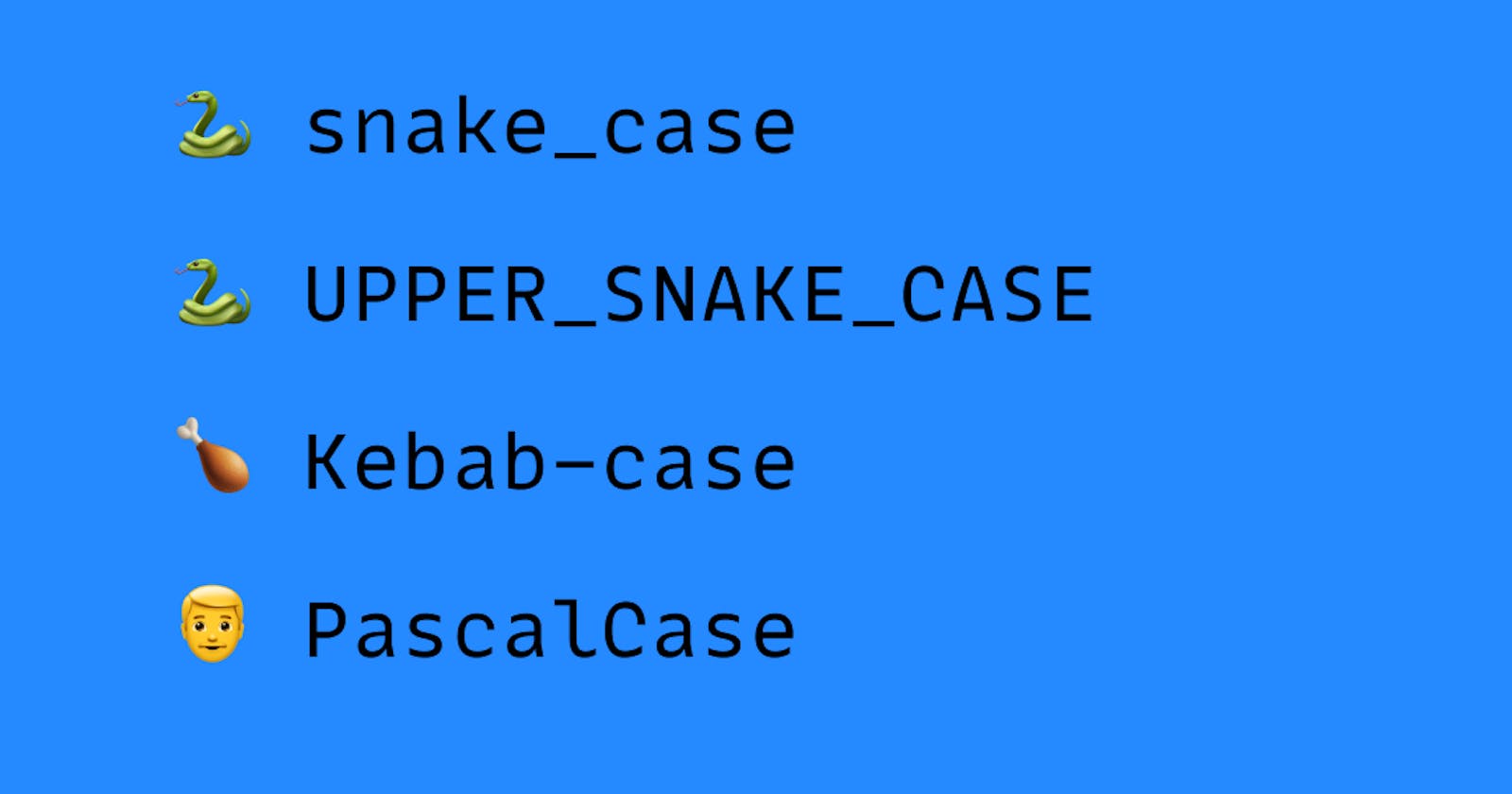Introduction
Hello, fellow coders! In the programming world, naming conventions play a vital role in keeping our code readable, clean, and consistent. With so many case styles to choose from, finding the right one can be a bit overwhelming. In this blog post, we'll explore various naming conventions, their purpose, best use cases, and when to use them. Let's dive right in!
Camel Case (camelCase):
Camel case, also known as lowerCamelCase, is one of the most common naming conventions in coding. It starts with a lowercase letter, and each subsequent word is capitalized. This style is frequently used in JavaScript, Java, and many other programming languages.
Best Use Case: Camel case is great for naming variables, objects, and functions where readability and compactness are essential.
Example: let thisIsCamelCase;
Pascal Case (PascalCase):
Pascal case, or upperCamelCase, is similar to camel case but with a twist: the first letter of the word is capitalized. This naming convention is prevalent in languages like C# and is often used for class names, constructors, and namespaces.
Best Use Case: Pascal case is ideal for naming classes, constructors, and namespaces, where each word should be easily distinguishable and capitalized.
Example: class ThisIsPascalCase { }
Snake Case (snake_case):
Snake case is the practice of separating words with underscores (_) and keeping all letters lowercase. This convention is widely used in languages like Python and Ruby, and is perfect for naming variables and functions.
Best Use Case: Snake case is best for naming variables and functions in languages that don't support capitalization-based conventions or when you want to ensure maximum readability with underscores.
Example: this_is_snake_case = "hello world"
Kebab Case (kebab-case):
Kebab case, sometimes called spinal case or dash-case, connects words with hyphens (-) instead of underscores or capitalization. It's commonly used in naming files, folders, and URL slugs, but not usually for variables or class names since it's not compatible with some languages.
Best Use Case: Kebab case is perfect for naming files, folders, and URL slugs where spaces are not allowed and readability is essential.
Example: this-is-kebab-case.html
CONSTANT_CASE (Upper Snake Case):
The CONSTANT_CASE, or upper snake case, consists of uppercase letters and underscores to separate words. This convention is used across various programming languages, such as Java and Python, to denote constant values that should not change during the execution of a program.
Best Use Case: Use CONSTANT_CASE for naming constant values and enum elements, signaling to other developers that the value should not be modified during the program's execution.
Example: THIS_IS_CONSTANT_CASE = 42
Conclusion:
Choosing the right naming convention is crucial for keeping your code consistent, readable, and maintainable. Be sure to follow the standard conventions of the language you're using, and always prioritize clarity over personal preference. By understanding the best use cases for each case style, you'll be better equipped to apply them effectively in your projects.
So, what's your favorite naming convention, and which one do you find most helpful? Let us know in the comments section below. Happy coding!

